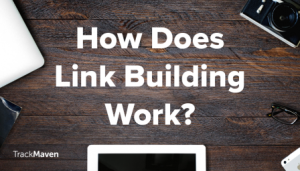September 19, 2016
When Facebook unveiled its Messenger Platform in April, primarily to help developers build bots, the first-to-market examples were generally limited to receiving information within a Messenger thread.
Unless you had an appetite to receive weather reports from a cat called Poncho or wanted to receive CNN news updates via Messenger there wasn’t much to actually “do” – with the exception of a 1-800-Flowers order, which demonstrated the potential for customers to transact on the Messenger platform.
Since then, we’ve seen a healthy deployment of bots by brands that many people would want to interact with more regularly (e.g. booking a flight with Iceland Air or ordering a pizza from Domino’s), designed to help complete tasks that would otherwise be performed in dedicated brand apps or a mobile optimized website.
Given that many of the brands we care about most already had a presence on Facebook, and were likely already responding privately on Messenger, before the bots arrived, it’s important for brands to design bots elegantly to ensure a positive customer experience and access to human help when needed.
Without foresight, many brands risk destroying years of equity gained from being present and responsive to customers on the channels of their choice.
Here are some best practices to ensure contentment rather than conflict.
1. Use the persistent menu feature to allow users to ask for humans
The persistent menu is always accessible to a Messenger user next to the type a message field. A user can invoke the menu, by tapping on the 3-caret icon.
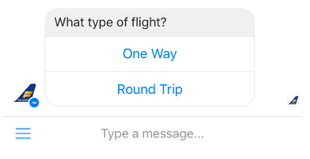
The menu options can be customized to display up to 5 options, one of which should be an option to speak to a human (e.g. Iceland Air’s “Chat with an agent”).
Additionally, it’s useful to offer users the ability to go back to the start of the flow (e.g. “Start over”) as users may get lost in the bot flow, especially as there’s no back button.
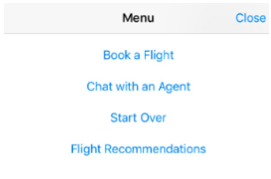
2. Signpost human help in your first automated message
Although the persistent menu exists as a feature within Messenger, did you know about it before you read this blog post? Do your customers? To mitigate the risk of your customers not knowing how to invoke the persistent menu, ensure your first automated message signposts human help too.
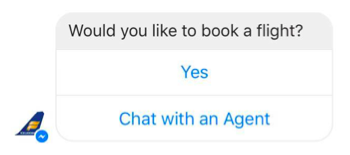
3. Use multiple choice menus or quick replies, rather than open-ended questions where possible
From a user point of view, it’s much quicker to select options than type. Therefore, if your question has limited responses use menus and quick replies.
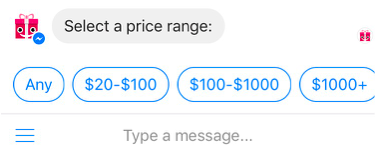
Additionally, there’s more metadata in Messenger’s API for these type of interactions that your social customer service vendor can leverage to better reduce noise within your customer service workflow automatically.
4. Establish the user’s intentions after a period of inactivity
Ordinarily, a user interacting with a bot will do so quickly after the bot has sent the user a message. If a long period of time has passed, the user may not wish to continue where they left off. Ask them what they’d like to do next.
This is also a good opportunity to signpost human help again.
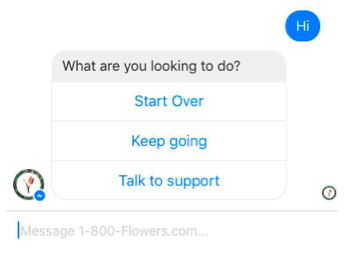
5. Detect other applications
Sharing is caring.
If you’re sharing the Messenger thread with other applications, such as a social customer service platform, ensure you’re not interrupting humans conversing. Messenger messages include metadata showing the ID of the app the message was sent from (“app_id”) that can be used to avoid colliding in the thread.
6. If you’re creating a separate presence, offer in-channel hand offs
Dominos (UK & Ireland) have established a dedicated presence on Messenger with Dom The Pizza Bot, separate from their existing Domino’s Pizza UK page and Messenger presence. This makes it clear it’s the bot experience, but generally isn’t recommended given the available features that can help ensure collision does not occur between customer, bot and customer service agents.
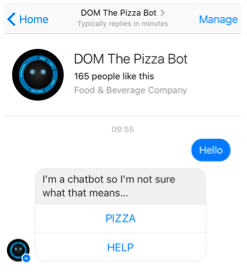
If you do pursue this approach, ensure an effortless handoff. In this example, Dominos have sign posted “HELP” as an option, but deflect to a webpage. Instead, they could use Messenger’s m.me URLs to jump to a thread where their customer service agent could help the customer in-channel.
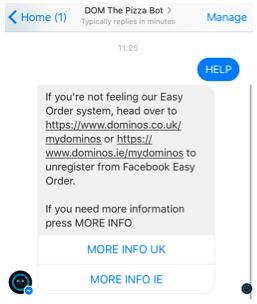
Conclusion
Leveraging the latest features and ensuring you’re complying with the constantly evolving Messenger platform policy will be key to ensuring that bots and humans co-exist seamlessly within a single Messenger thread.
Update On December 24, 2018
Facebok updated their compliance regulation with new “New Privacy Compliance and Protections for GDPR“, where they established layered approach to register apps and certify them through the platform to ensure GDPR compliance.
Digital & Social Articles on Business 2 Community
(96)





